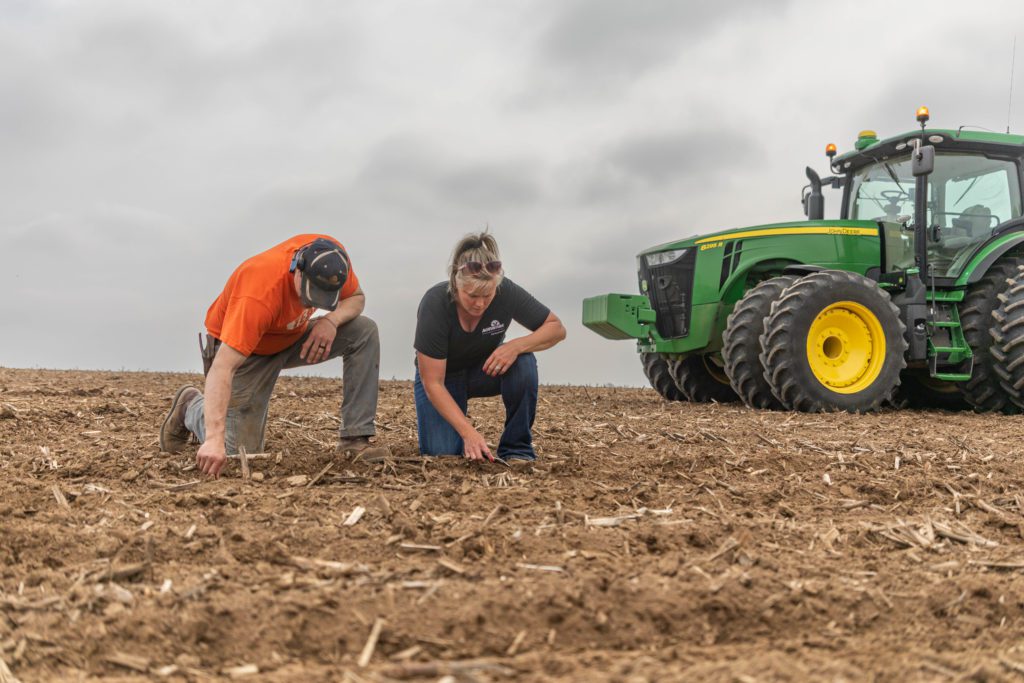By Jerry Hartsock & Dakota Miller
Cutting Edge Consulting & Research Services
Here we are, a couple of weeks until corn planting begins in the delta. Corn and soybean prices are still very strong/favorable. Natural gas prices have fallen, and thus some/most nitrogen prices have eased up. Dry fertilizer prices have also come down. Dry or droughty concerns have lessened in the western cornbelt as a whole, but there is still a ways to go to be able to replenish soil profiles.
With the above observations and information, we are intrigued to know if your current farming circle of influence is suggesting that you plan to reduce input cost per acre by all means necessary as a way of saving to prosperity, OR does your advisory council push you to do practically every strategy possible to increase yields. This includes doing all those extra little details recommended in AgVenture’s Maximum Profit System™ including performing practices at the highest level and standards.
With 160 bpa yields at $6.50/bu being the break-even level in many cases, it can be a daunting task to stay the course with corn production costs per acre approaching $900-1100. That is why it is imperative to listen to the AgVenture money makers on your advisory council who will guide you through the crop planning process. The cropping plan will lay out the necessary steps and tactics to better ensure success as well as the standards of which to perform each task that we know leads to higher yields like planting, nitrogen management, and fungicide use to name just a few. For example, we have conducted tests for two years on various planters deemed to be able to plant at “high speeds” whether from the factory or retrofitted with speed tubes or other means. Our findings are that we have a lower ear count at harvest time with the higher speeds than at our recommended speeds of 4-4.5 mph with a maximum of 5 mph.
We believe that the planting process should be a finesse process, not a violent one that throws soil aggressively and causes excessive unit bounce. At higher speeds (6 mph +) depth inconsistency and seed-to-soil contact are compromised and therefore are the source of our lesser ear counts come fall. With that in mind, we are asking people to take the challenge with us to expand our scope of testing and comparing different speeds, their NEPS score, and their final ear count/yield at harvest time. We would like to target slowing down to 4.5 mph for a few rounds (preferably 3+ acres), and then targeting your normal planting speed.
Other options would include doing a few rounds say at 4.5 mph vs 6.5 mph OR 5 mph vs 7 mph (we suggest keeping a 1.5 or 2 mph difference). We would just need information such as planting date, planting speed, tillage, planter information, as well as ear count or yield comparisons at the end of the year to compile as much valid information as possible.
As we lay out the standards of the planting process, there are some things to plan for and consider BEFORE we reach the day the planter goes in the ground.
- Is the planter in like-new shape to perform at a high level? (This is much more important than a new tractor!)
- Be sure you have exceptional warm AND cold germination scores before planting your corn
- Have you set the tone for your team, or anyone involved in the operation? (includes applicators, product providers, anyone running the planter, etc.) Laying out the plan for the season and the standards at which YOU want them done.
- Fungicide inventory is not good and news the other day of formulation issues with Delaro® Complete now makes things even worse. Do NOT wait until late June or July to make product decisions!
As always, we are looking at more products and practices to test. Here is a list of some of the things we want to consider more this season:
- Seed quality testing in the field
- Bevy of new corn products
- ILEVO® seed treatment as protection from SDS and a way to push higher yields
- Late season soybean sulfur, potassium, and boron on corn and soybeans
- Corn fungicide programs including Veltyma®, Trivapro™, Miravis® Neo, and Lucento®
- Miravis® Neo and Lucento® as fungicide options for soybeans
- A larger gamut of planting speed tests in corn
- Population testing through large blocks in soybeans
Never a better time than the present to get prepared for an incredible growing season!

